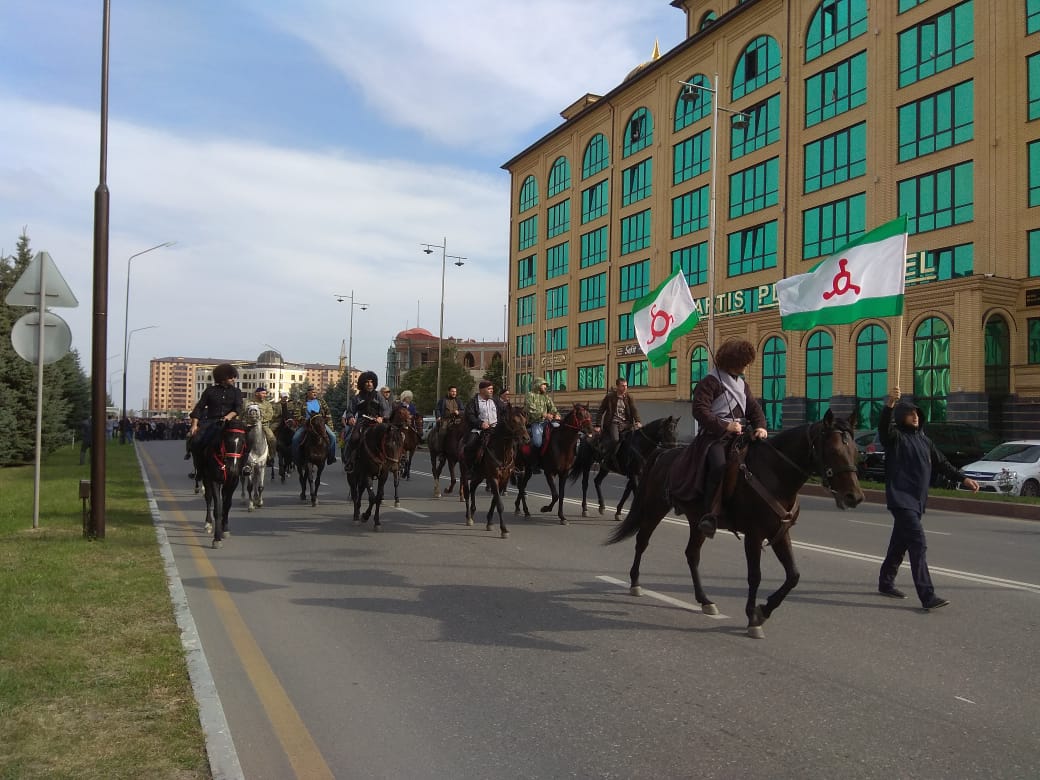
A ruling by the Supreme Court of the Russian Republic of Daghestan over a disputed section of the Chechen–Daghestani border has now come to light — over three months after it was made. On 16 July, the court ruled in favour of the Daghestani town of Kizlyar over the Chechen authorities.
The case involved a series of land plots near Kizlyar that the Chechen authorities claimed were rightfully a part of Chechnya.
The Supreme Court rejected the claim of the Ministry of Natural Resources and Environmental Protection of Chechnya that 105,000 square metres of forest near the town was not within the town’s boundaries — but was instead within the Shelkovsky District of Chechnya.
In its 16 July decision, the court ruled that these sections were not part of Chechnya since the plaintiff did not challenge the 2012 law ‘On establishing the borders of Daghestan municipalities and on amending the law “On the status and borders of Daghestan municipalities” ’.
According to this law, the borders of the municipality include all categories of land, including forest lands.
Chechnya has appealed the decision to the Supreme Court of Russia and consideration of the case is scheduled for 16 December.
Despite the public outcry caused by the publication of the decision, officials have yet to comment on the issue.
The lawsuit in the Daghestani court was filed in April 2019. While the case was pending, a road sign was installed at the entrance to Kizlyar in June reading ‘Shelkovskaya District of Chechnya’. Having noticed the sign, local residents dismantled it on 10 June causing consternation among Chechen authorities.
[Read on OC Media: Residents of Daghestan demolish Chechen road sign at the border near Kizlyar]
Daghestan’s central authorities pull out of the case
The case about who owns the contested territory initially did not question whether the territory belonged to Daghestan.
It was started by the Committee on Forestry of Daghestan, who sued the Kizlyar authorities, claiming that the town’s master plan, approved in 2014, contravened Daghestani law by labelling the series of forest plots as ‘within the town’ as opposed to ‘forest’ outside of the town, which should be under the control of the Committee.
The court later added the Chechen Ministry of Natural Resources as a co-litigant, who pressed a new claim that part of the territory in question actually belonged to Chechnya.
Abas Ramazanov, a lawyer for the Forestry Committee of Daghestan, told OC Media that on 11 July, five days before the decision of the Supreme Court of Daghestan, the municipal legislature of Kizlyar changed their position from designating the land as ‘zones of recreational significance’ to ‘lands of the [Russian] forest fund’.
As a result, Ramazanov said, the Forestry Committee of Daghestan retracted its lawsuit.
A secret decision
Daghestani lawyer Rasul Kadiyev was the first to reveal the existence of the Daghestani Supreme Court’s decision, which, he said, appeared in the database of the court only last week.
Kadiyev told OC Media that the court made this decision public after the media reported that such a decision actually existed. Though there has still been no official confirmation from the Daghestani Supreme Court.
According to him, the only information about the land dispute between Kizlyar and Chechnya became available on the website of the Supreme Court of Russia three weeks ago, when the appeals court received a complaint against the decision from the Ministry of Natural Resources and the Environment of Chechnya.
‘Normally, in the most resonant cases, the press service of the Supreme Court of Daghestan publishes its decision on the official website, but in this case, the document itself was hidden’, said Kadiyev.
‘Also, it was difficult to find it in the database of court cases, as [part of] the case number was intentionally or accidentally omitted, and the text was anonymised: there were no names, addresses and no mention of the name of the town of Kizlyar,’ he added.
Kadiyev suggested that the concealment of the court’s decision could have come from the leadership of Daghestan, so that the topic of borders, which has been inflammatory in the past, would not be raised again.
He cited the lack of official statements on the matter from Chechen and Daghestani authorities as evidence of this.
In addition, according to Kadiyev, there is a great deal of doubt about the way the decision was made.
‘Staying inside the courtroom, the judge simply compared the colours that indicated different zones and borders on the map, and did not appoint any land examination that would establish the modern coordinates of the plots’, said Kadiyev.
He said that if Chechnya loses its case in the Supreme Court of Russia, they might file a lawsuit to repeal the Daghestani law on borders.
Chechnya’s controversial land deals
The border delimitation process with Daghestan has proven highly contentious in Daghestan.
In February, a number of communities in districts of Daghestan bordering with Chechnya demanded more transparency in the process.
Shahban Khapizov, a Daghestani historian and member of the public commission on the harmonization of borders between Chechnya and Daghestan, told OC Media in April that there were a number of potential problem areas in Daghestan which Chechnya claims.
Among them, he named the upper reaches of the Chagiri River, in Daghestan’s Tsumadinsky District, a part of the village of Ansalta, in Daghestan’s Botlikh District, and an area of 74 hectares near Kizlyar.
In November 2018, a part of the village of Ansalta, along with Lake Kazena-Am, 700 hectares along the Andean ridge, and an area of 164 hectares in Gumbetovsky District were briefly marked on a map on the Chechen parliament’s website within their territory.
Border talks between the two republics began several months after a land deal was signed between the leaders of Chechnya and its western neighbour, Ingushetia.
Details of the controversial deal, signed on 26 September by then-Ingush head Yunus-Bek Yevkurov and his Chechen counterpart, Ramzan Kadyrov, were initially kept secret from the public. It later emerged Ingushetia would transfer 340 square kilometres, about 9% of its territory, to Chechnya.

The deal led to weeks of street protests and widespread calls for Yevkurov’s resignation.
Several MPs in the Ingush parliament claimed the vote in parliament approving the deal was falsified while the Ingush Constitutional Court declared it unconstitutional.
[Read on OC Media: Court in Ingushetia considers ‘falsified’ vote on Chechnya land deal]




 24 October 2019
24 October 2019


